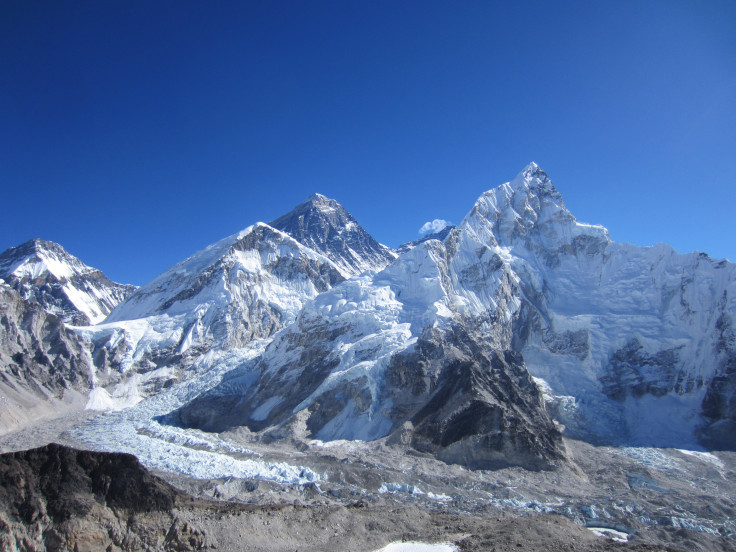Mount Everest Snowstorm Exposes Fatal Communication Gaps in Himalayan Rescue Efforts
Storm cuts off access roads, collapses tents and strands trekkers at high altitude

A powerful blizzard struck the eastern Tibetan slope of Mount Everest on 3 October, trapping nearly 1,000 climbers and trekkers at camps above 4,900 metres. The storm, one of the most severe in recent years on the mountain, swept through the Everest Scenic Area with heavy snow and plunging temperatures that quickly turned routine expeditions into emergencies.
Hundreds of climbers were evacuated to safety in nearby towns, but many others remained stranded as snow blocked roads and made trails impassable. Rescue operations were slowed by poor visibility and dangerous terrain, leaving some groups without contact for long periods. The scale of the disruption turned the evacuation into one of the largest Himalayan rescue efforts in recent memory.
The incident has intensified scrutiny over the management of warnings, logistics and emergency systems in the high Himalayas. Questions have emerged about the timing of official alerts, the reliability of communication equipment at altitude and the adequacy of contingency planning. For many observers, the storm has exposed how vulnerable even established mountaineering infrastructure remains when confronted with sudden and extreme weather.
How Conditions Deteriorated
Heavy snowfall began on Friday evening near the Everest Scenic Area on the Tibetan side, intensifying quickly and cutting off access roads to remote campsites at high elevation. By Saturday, tents had collapsed under the weight of snow, some trekkers were showing signs of hypothermia, and visibility had dropped sharply.
By Sunday, roughly 350 people had been guided to safety in the township of Qudang, China Central Television reported. Authorities had established contact with more than 200 others still stranded, though many remained unreachable for long periods as weather conditions worsened and routes became dangerous.
Warnings and Communication Failures
One of the most serious problems was the gap between when the storm struck and when official warnings were issued. The local tourism authority in Tingri County used WeChat to suspend ticket sales and entry to the Everest Scenic Area only after many climbers had already been trapped. By that stage, both road and footpath access were blocked.
Rescue teams were also delayed by logistical obstacles. Many campsites became unreachable without prior planning for routes, equipment and backup communications. Several trekkers reported that their devices failed at higher elevations, leaving rescuers to rely heavily on local guides and villagers to locate stranded groups. The pattern of delayed contact highlights concerns that emergency messaging, particularly in severe weather, is not sufficiently reliable or tested.
Rescue and Safety Protocols
The storm has highlighted the vulnerabilities of high-altitude expeditions and the weaknesses in current rescue systems. Observers say earlier warning mechanisms, including satellite monitoring and automatic alerts to trekking operators, could provide vital extra time. Camps at 4,900–5,000 metres also require stronger communication tools with backup power sources and proper training for climbers.
Blocked roads during the evacuation further exposed the absence of contingency planning. Experts argue that pre-designated backup routes and staging posts should be incorporated into protocols.
It's become so safe and touristy all the work is done for the climbers and they just need to follow a path. It needs to be scaled back or new routes need to be pioneered.
— Paul (@WomanDefiner) October 5, 2025
Hope the sherpas & other workers are not in danger or risking their lives on this rescue mission
— Medicare For All Saves $ + Lives (@BichonSnuggles) October 5, 2025
Let the Everest tourists get their money's worth
Thousands more will simply take their place if they don't make it
Sherpas are precious few
Just looked it up, they aren't climbers actually on the mountain, this is trekkers caught out in Tibet by a blizzard. It says they're below the East Face, which is very much still a no-tourists climb.
— Edgar Friendly (@edgar_frie12734) October 6, 2025
Waiting for Updates
The Mount Everest snowstorm has laid bare critical weaknesses in communication and emergency planning. Delayed warnings, equipment failures and logistical barriers combined to hinder evacuation efforts and prolong the ordeal for hundreds of climbers.
Although hundreds have now been rescued, the incident is expected to serve as a wake-up call for Everest authorities, trekking companies and international mountaineering bodies. Strengthening early warning systems, reinforcing communications infrastructure and improving rescue protocols are likely to become priorities.
© Copyright IBTimes 2025. All rights reserved.



















